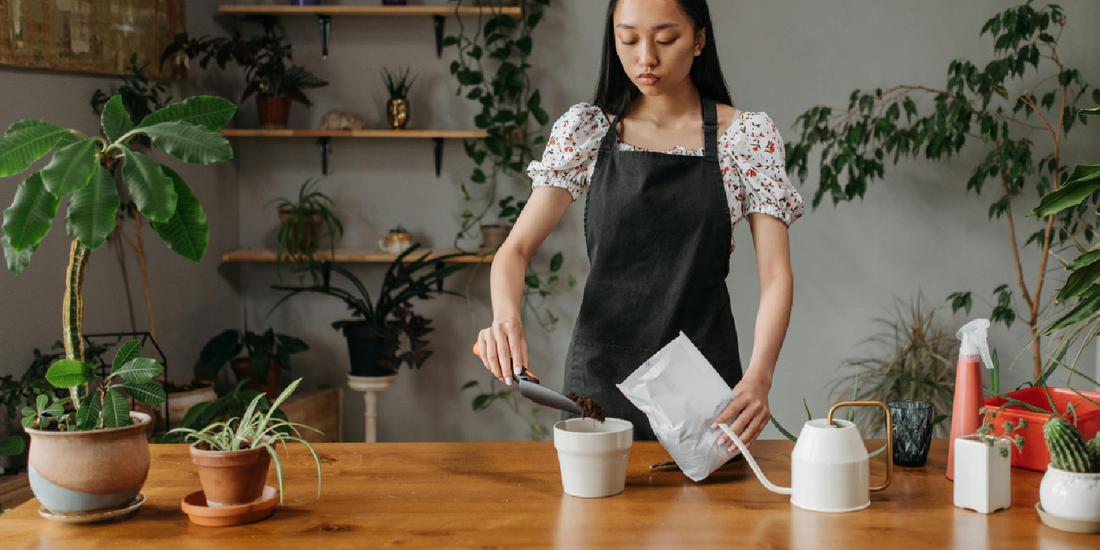
Can Any LED Light Be Used as a Grow Light?
Share
Indoor gardening has been gaining momentum across the globe, driven by urban living, aesthetic home décor trends, and a renewed interest in self-sufficiency. From herbs on kitchen counters to lush green walls in living rooms, people are finding ways to bring nature inside.
But as soon as the excitement of arranging pots and choosing plants settles, one crucial question arises for many plant owners: Can any LED light be used as a grow light?
At first glance, the idea seems logical. LED lights are energy-efficient, long-lasting, and available in various brightness levels. So why not use a regular LED bulb to replace expensive grow lights? The truth, however, lies in the details of light science and plant biology — details that make the difference between a plant that merely survives and one that thrives.
1. Understanding What Plants Need from Light
Plants don’t just need “light” in the way humans perceive it. They require specific wavelengths to fuel photosynthesis — the process by which they convert light energy into sugars for growth.
Natural sunlight delivers a full spectrum of wavelengths, covering everything from ultraviolet (UV) to infrared (IR). Out of this range, the photosynthetically active radiation (PAR) — light between 400 nm and 700 nm — is what plants can use.
Key wavelength roles:
- Blue light (400–500 nm) – Encourages strong vegetative growth, healthy leaves, and compact structure.
- Red light (600–700 nm) – Promotes flowering and fruiting, especially crucial for herbs and flowering ornamentals.
- Far-red light (~730 nm) – Influences germination and shade response, often used in advanced horticulture setups.
Regular household LEDs are engineered for human visual comfort, typically optimizing green-yellow wavelengths that our eyes detect most efficiently. Unfortunately, this is not the spectrum plants find most beneficial.
2. Why Not All LED Lights Work for Plant Growth
a. Spectrum Mismatch
Household LEDs might be labeled as “daylight” or “cool white,” but their emission peaks are designed for visual brightness, not plant nutrition. They often lack the strong blue and red peaks found in dedicated grow lights.
b. Insufficient Intensity
Plant growth depends not just on the right wavelengths, but also on the intensity of photons hitting the leaves. This is measured as PPFD (Photosynthetic Photon Flux Density).
- A desk lamp might look bright to you, but it may only deliver 20–50 μmol/m²/s at leaf level — far below the 200–600 μmol/m²/s that most indoor plants require for active growth.
c. Duration and Heat
Plants often need 12–16 hours of consistent light daily indoors. Ordinary LEDs are not built for this duty cycle; they may overheat, shift in spectrum over time, or fail prematurely.
3. Can You Get Away with Using Regular LEDs?
For low-light plants like pothos, peace lilies, ZZ plants, or snake plants, you might get by with a bright white LED in the 5000–6500K range. These plants are naturally adapted to dim forest understories, so they won’t demand high-intensity lighting.
However, if your goal is to grow:
- Herbs like basil, mint, or cilantro
- Leafy greens like lettuce or spinach
- Fruiting plants like tomatoes or peppers
- Flowering ornamentals like orchids or African violets
…then you’ll quickly run into problems. Regular LEDs simply can’t provide the balanced light spectrum or photon density needed for vigorous, healthy growth.
4. The Science of Full-Spectrum Grow Lights
High-quality LED grow lights — such as those integrated into the amoyls VerdantGlow S-Shaped 8-Tier Plant Shelf with Grow Lights — are engineered to deliver the ideal blend of blue, red, and sometimes green and far-red light to mimic sunlight indoors.
A good grow light:
- Targets blue and red wavelengths for efficient photosynthesis.
- Has a high PAR output to match plant needs at various stages.
- Maintains stable output over long daily runtimes.
Some modern full-spectrum LEDs also emit light that looks white to the human eye, so you can enjoy the aesthetics of your space without bathing it in harsh purple tones.
5. How amoyls VerdantGlow Meets Plant Needs
The VerdantGlow S-Shaped 8-Tier Plant Shelf was designed to eliminate the trial-and-error many indoor gardeners face.
Full-Spectrum Precision
- Built-in LEDs emit wavelengths across the PAR range, ensuring balanced growth for seedlings, mature foliage, and blooming plants alike.
Uniform Coverage
- The S-shaped tier design ensures even light distribution across all shelves. No more tall plants hogging the light while smaller ones languish in shadows.
Adjustable Setup
- Shelves can be repositioned to match plant height, keeping the optimal light-to-plant distance for maximum growth efficiency.
Energy Efficiency
- Advanced LED chips reduce power consumption while delivering high PPFD levels — better for your electricity bill and the environment.
6. Research Backs It Up
A study published in HortScience found that basil grown under a balanced red-blue LED spectrum produced more biomass and higher essential oil content compared to plants under cool white LEDs.
Similarly, research from Michigan State University demonstrated that lettuce grown under dedicated LED grow lights had faster growth rates and higher leaf quality than lettuce under regular fluorescent and LED bulbs.
7. Common Myths About LED Grow Lights
-
Myth 1: “Brighter is better.”
→ Intensity matters, but only if the spectrum matches plant needs. -
Myth 2: “Any white LED is full-spectrum.”
→ Full-spectrum is about wavelength coverage, not just color temperature. -
Myth 3: “Plants don’t need darkness.”
→ Dark periods are essential for respiration and energy balance.
8. Practical Tips for Using LED Grow Lights
- Match Light to Plant Type – Herbs and leafy greens benefit from more blue light; flowering plants need more red.
- Mind the Distance – Keep LEDs 6–18 inches above plants for optimal PPFD.
- Set a Timer – 12–16 hours of light per day works for most indoor species.
- Rotate Plants – Ensure all sides get equal light exposure.
9. Real-World Results with VerdantGlow
Customers report:
- Basil seedlings germinating in 5 days instead of 8.
- Succulents retaining vibrant color without stretching.
- African violets blooming multiple times per year.
- Compact, bushy herbs with intense flavor.
10. Final Takeaway
So, can any LED light be used as a grow light? Technically yes for survival, but not for optimal growth. If you’re serious about indoor gardening, a purpose-built grow light system is essential.
The amoyls VerdantGlow S-Shaped 8-Tier Plant Shelf with Grow Lights offers a complete solution — stylish enough for your living room, powerful enough for professional-level plant care.
Grow smarter, not harder. Your plants deserve the light they need to truly thrive.
